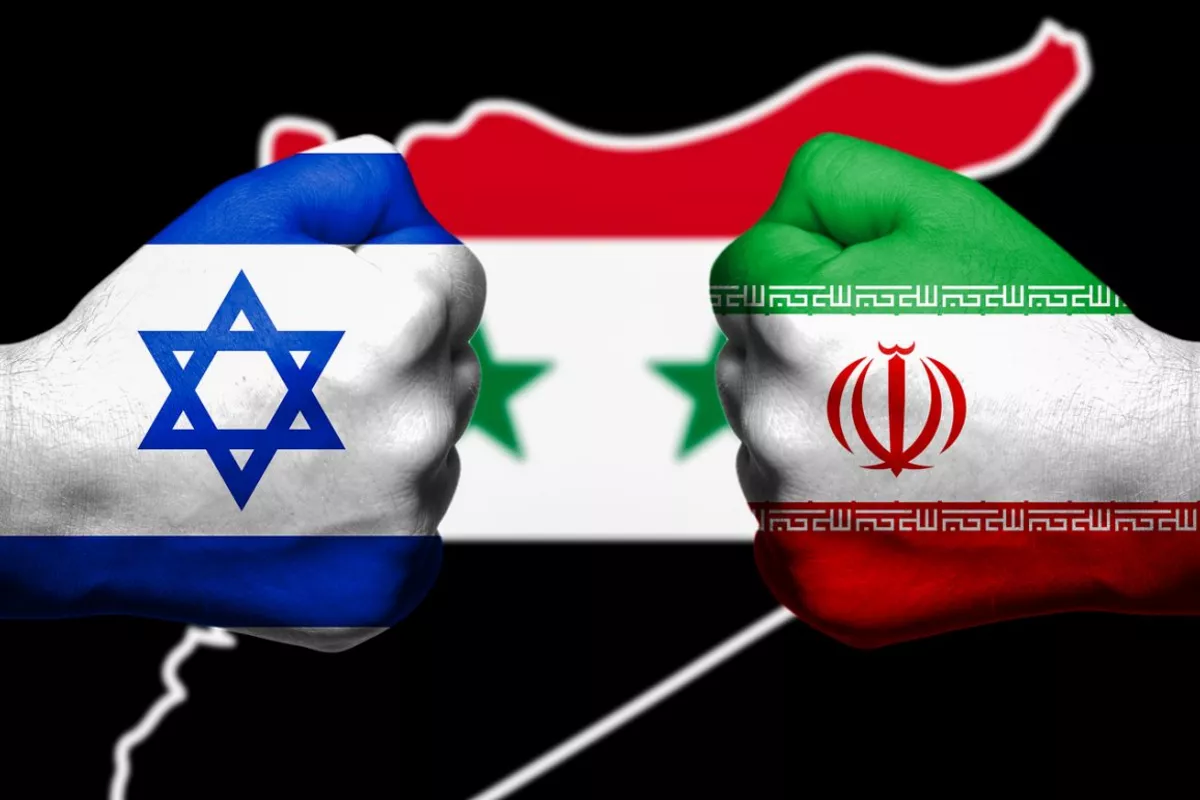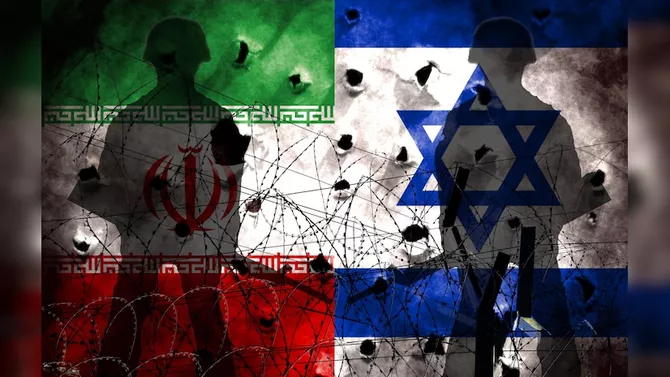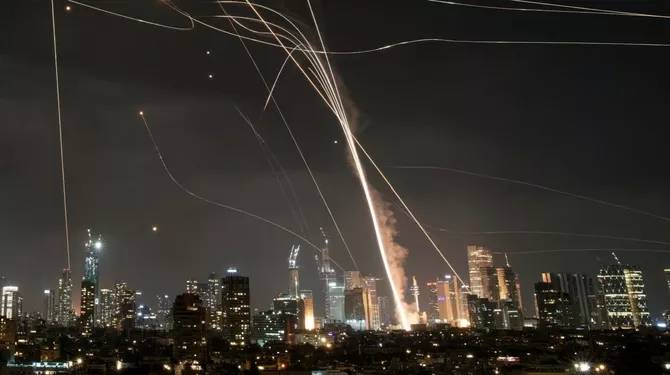
Photo credit: jiss.org.il
Israel's planned strike on Iran was no secret. Just days earlier, President Donald Trump reportedly told the Israeli Prime Minister that the United States would not participate in any attack on Iran. Trump also asked Netanyahu to hold off until negotiations with Tehran had concluded. But Netanyahu did not wait.
Although an Israeli strike on Iran had been widely anticipated, its execution still shocked not only Iran but the entire international community. In the early hours of June 13, Israel launched a massive airstrike targeting several of Iran’s nuclear facilities, air defense systems, and other strategic sites.
Israeli sources reported the destruction of dozens of radars and surface-to-air missile launchers. According to the IDF, the overnight strikes killed Hossein Salami, Commander of the Islamic Revolutionary Guard Corps (IRGC), Mohammad Bagheri, Chief of the General Staff of the Armed Forces, and Gholam Ali Rashid, Commander of the IRGC's Emergency Command.
The death of Hossein Salami was confirmed by Iranian authorities. Additionally, Iran’s Tasnim news agency reported that nuclear scientist and former head of the Atomic Energy Organization of Iran, Fereydoon Abbasi, was among the dead. In total, six nuclear scientists were killed, and 95 individuals were injured across various parts of the Islamic Republic.

From left: Gholam Ali Rashid, Hossein Salami, Mohammad Bagheri – Israel says its strikes eliminated the three most senior military commanders of the Iranian regime (Iranian media)
Israel reportedly deployed 200 fighter jets and dropped over 330 munitions on approximately 100 targets. According to Iran’s Permanent Representative to the United Nations, the Israeli strikes resulted in 78 deaths and over 320 injuries.
In response, Iran launched more than a hundred drones toward Israel. These UAVs were expected to reach Israeli territory within hours, but as reported by The Times of Israel, Israeli Air Force units intercepted them in time, preventing any from reaching their targets. The interceptions took place outside Israeli airspace, including over Jordan.
Following the strikes, Iranian Armed Forces spokesman Brigadier General Abolfazl Shekarchi told IRNA news agency: “The Islamic Republic of Iran will undoubtedly retaliate, and the enemy will pay a heavy price… Israel and the United States will suffer and receive a harsh blow.”
That response came the following night. As part of Operation “Truthful Promise - 3,” Iran struck dozens of targets, including military sites and airbases within Israel, according to foreign media citing the IRGC press service.
The Jerusalem Post reported at least 70 injuries and two fatalities from the Iranian attack. The commander of the Tel Aviv district acknowledged that the strikes caused significant material damage, though the human toll remained relatively limited.
Casualties would likely have been higher had the U.S. not deployed Patriot and THAAD missile defense batteries to protect Israel. “Patriot and THAAD systems, originally deployed under the Biden administration, participated in Israel’s air defense,” The Washington Post quoted U.S. officials as saying.

Photo: Shutterstock.com
According to newly appointed IRGC commander Ahmad Vahidi, Iran struck more than 150 targets during the attack, including the Nevatim Air Base. One Iranian missile reportedly hit a nuclear research facility in Tel Aviv, and explosions were also reported near Ben Gurion Airport. Iranian media said Tehran had warned that it would target military bases in any Middle Eastern country that assists in Israel’s defense.
At approximately 01:30 AM this morning, Iran launched a new wave of missile attacks on Israel. The IRGC stated that the response to Israel’s aggression would continue for as long as necessary, echoing Netanyahu’s own rhetoric from the previous day. Another missile launch from Iran was recorded at 5:00 AM.
Reports also emerged overnight of explosions in Tehran, particularly near Mehrabad Airport, and in the city of Isfahan, home to one of Iran’s key nuclear facilities.
Earlier, White House special envoy Steve Witkoff reportedly told Republican senators in a closed-door meeting that if Israel attacked Iran’s nuclear facilities, Tehran could retaliate with massive casualties. This was reported by Channel 24 citing Axios.
According to U.S. intelligence estimates, Iran possesses about 3,000 ballistic missiles, with at least 2,000 capable of carrying warheads weighing no less than 1,000 kilograms. Iran manufactures approximately 50 ballistic missiles per month-or 600 annually-many of which can reach Israeli territory. Iranian military sources have also claimed the development of a new ballistic missile with a warhead weighing more than 1,800 kilograms.
Many experts have noted that while Iran can mount effective attacks, it remains poorly prepared to defend its own territory from Israeli counterstrikes. Key strategic sites were left exposed. According to protocol, a mass takeoff of Israeli fighter jets on June 13 should have triggered Iranian air defenses and airborne interceptions-but none of that occurred, despite Tehran being aware of Netanyahu’s intentions.
Iranian analysts have attributed this failure to the recent arrival of a large cache of intelligence from Israel, which Tehran had not yet processed. Once it is analyzed, they argue, Iran will identify precise targets for retaliation. However, no one has yet explained why Iran’s air defenses failed to respond.
According to the International Institute for Strategic Studies (IISS) report Military Balance 2025, the IRGC Aerospace Forces have over 100 medium-range ballistic missile launchers capable of striking targets more than 1,000 kilometers away-enough to hit Israel, CNN reports.

© AP
Iran possesses both solid-fueled and liquid-fueled ballistic missiles. Liquid-fueled missiles can carry larger high-explosive warheads-up to 1,200 kilograms or more-compared to approximately 500 kilograms for solid-fueled ones. However, solid-fueled missiles offer the advantage of rapid launch readiness, while liquid-fueled ones require several hours to prepare.
According to CNN, ballistic missiles launched from Iran could reach Israel in about 15 minutes. Iran also has a range of drones and cruise missiles capable of hitting Israel, though these may take hours to reach their targets and carry smaller warheads, making them more vulnerable to Israeli air defenses.
The same IISS report states that Iran’s Air Force has 265 operational aircraft, most of which are outdated U.S.-made jets from the Cold War era. These aircraft would require mid-air refueling to reach Israel, yet Iran reportedly has fewer than five aerial refueling tankers.
During last year’s flare-up, The Wall Street Journal reported that Iran was considering the use of significantly more powerful warheads in any future response to Israel. Tehran indicated it might move beyond its usual reliance on conventional missiles and drones. Sources noted that the warheads under consideration could vastly exceed those used in prior operations.
What raised particular concern, WSJ reported, was that Iranian leadership was preparing a “comprehensive response,” potentially signaling a large-scale military campaign.
It’s worth recalling that on October 1, 2024, Iran launched a major direct strike on Israel, ostensibly in retaliation for the assassinations of Hamas leader Ismail Haniyeh and Hezbollah Secretary-General Hassan Nasrallah. Prior to that, in April, Iran had fired more than 300 ballistic and cruise missiles, along with armed drones, at Israel. Despite the scale of the assault, the damage was minimal.
That episode was de-escalated before it evolved into full-scale war. However, the current confrontation between these two regional adversaries appears far less likely to end in peace.
By Tural Heybatov
Share on social media